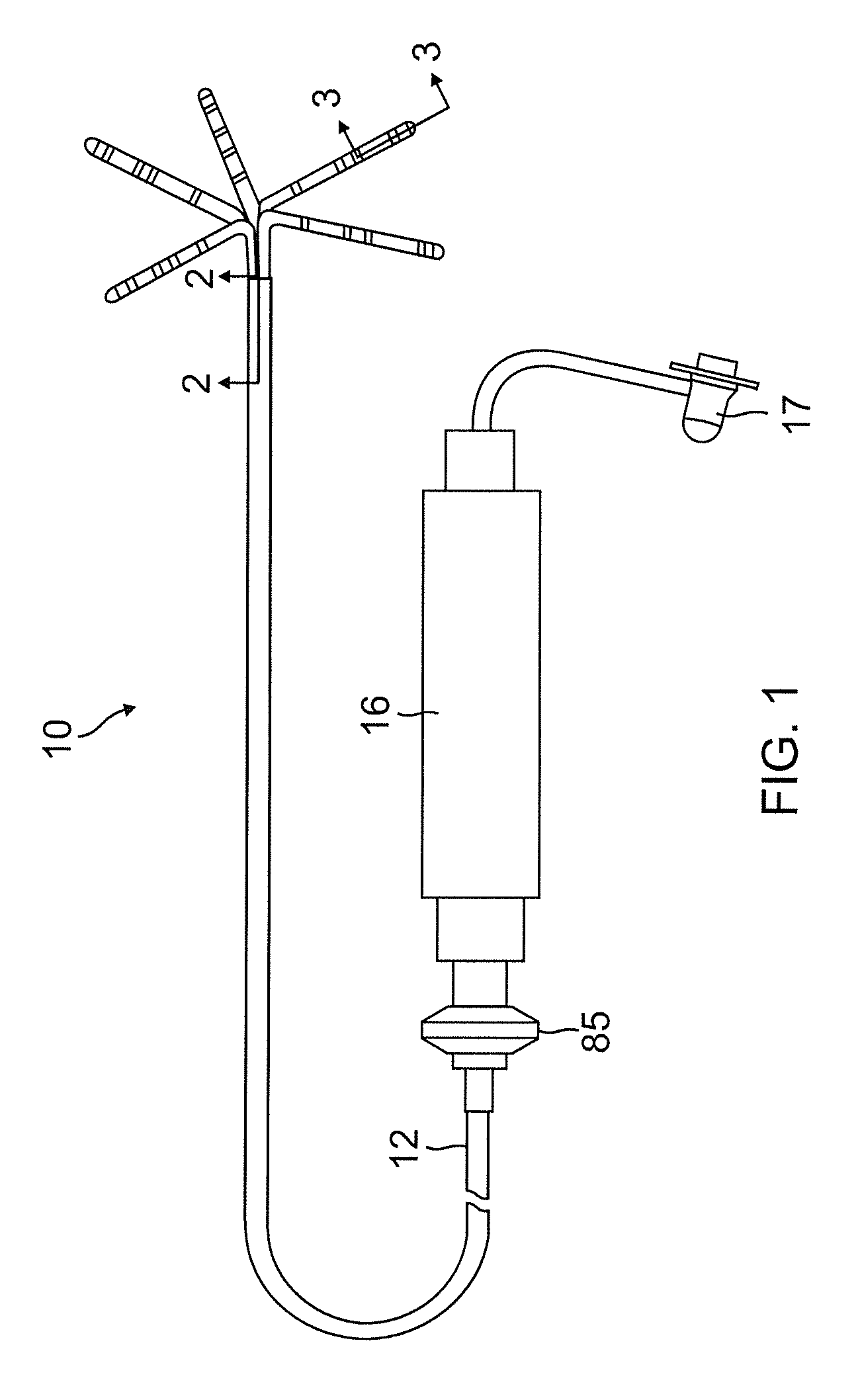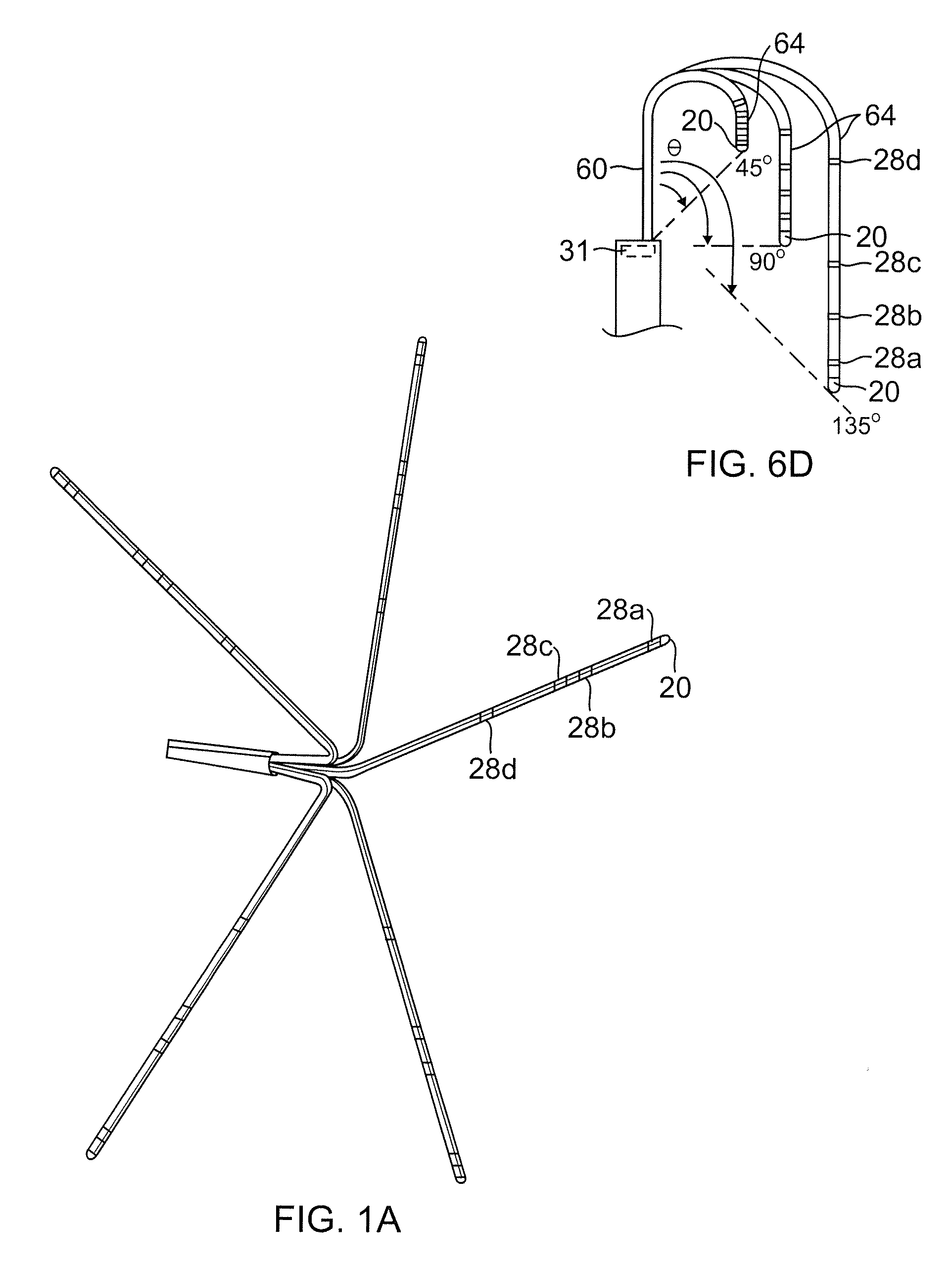Flower catheter for mapping and ablating veinous and other tubular locations
a catheter and catheter technology, applied in the field of catheters for mapping and ablating veinous and other tubular locations, can solve the problems of aberrant activity, difficult to manipulate and control the distal end of a straight catheter, and formation of a lesion within the cardiac tissue which is electrically non-conductiv
- Summary
- Abstract
- Description
- Claims
- Application Information
AI Technical Summary
Benefits of technology
Problems solved by technology
Method used
Image
Examples
Embodiment Construction
[0035]The invention is directed to a catheter 10 as shown in FIG. 1, having a distal assembly 18 comprising a plurality of spines 14. Each spine carries at least one electrode, preferably a tip electrode 20 and at least one ring electrode 28, such that when the spines are positioned in contact with tissue of a tubular structure at or near the heart, each spine is capable of obtaining electrical data and ablating tissue. As shown in FIG. 1, the catheter 10 comprises an elongated catheter body 12 having proximal and distal ends, a control handle 16 at the proximal end of the catheter body 12, and a distal assembly 18 comprising a plurality of spines 14 mounted at the distal end of the catheter body 12.
[0036]As shown in FIGS. 1 and 2, the catheter body 12 comprises an elongated tubular construction having a single, axial or central lumen 15, but can optionally have multiple lumens along all or part of its length if desired. The catheter body 12 is flexible, i.e., bendable, but substant...
PUM
 Login to View More
Login to View More Abstract
Description
Claims
Application Information
 Login to View More
Login to View More - R&D
- Intellectual Property
- Life Sciences
- Materials
- Tech Scout
- Unparalleled Data Quality
- Higher Quality Content
- 60% Fewer Hallucinations
Browse by: Latest US Patents, China's latest patents, Technical Efficacy Thesaurus, Application Domain, Technology Topic, Popular Technical Reports.
© 2025 PatSnap. All rights reserved.Legal|Privacy policy|Modern Slavery Act Transparency Statement|Sitemap|About US| Contact US: help@patsnap.com



